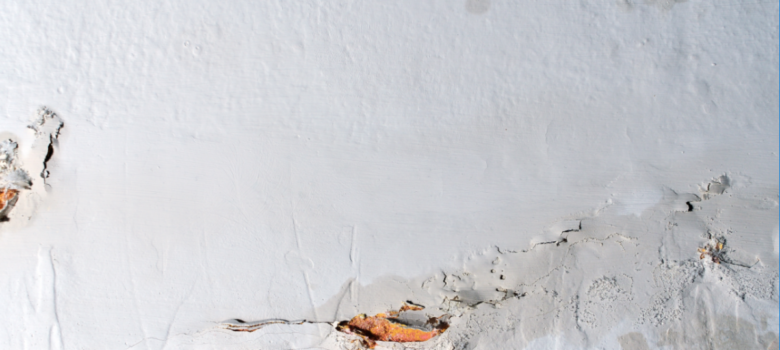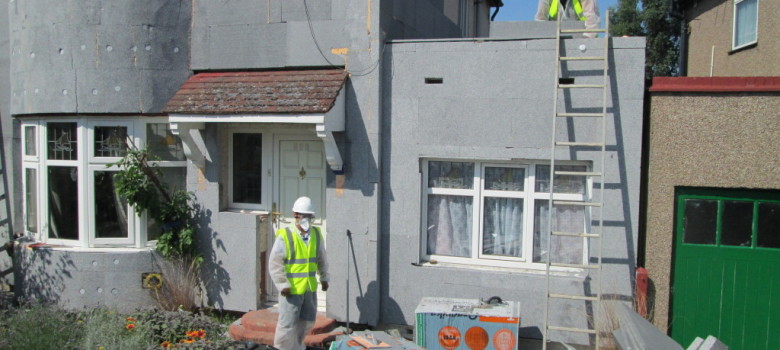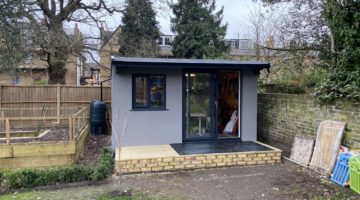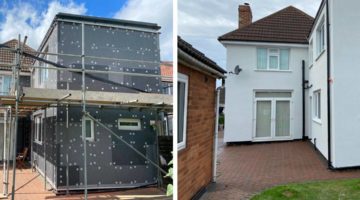
Condensation can cause damp anywhere and once it’s taken hold, it can be difficult to get rid of. As well as looking pretty horrible, damp and mould can lead to structural problems and health issues too. As with anything, it’s easier to prevent these problems than to treat them.
Here are our top tips for fending off damp in your home. Most are easy and inexpensive, but we’ve also thrown in a couple of long-term fixes which have higher installation costs.
Ventilation
Whilst home improvements such as double glazing save energy, they also increase the relative humidity inside a property. A lot of water vapour is created inside the house by everyday activities such as cooking and showering. This warm water vapour tends to settle on (cold) walls, sometimes leading to interstitial condensation. This is when moist air penetrates the wall, roof or floor where it reaches the dew point and condenses into liquid water. As you might imagine, this might be hidden or hard to treat, so it can easily lead to damp and mould.
So what can you do about it? Make sure to use an extractor fan when cooking or showering and ensure some ventilation at all times. Also dry your washing outdoors when possible. You can have expensive ventilation systems installed, but in most cases, a combination of extractor fans and windows will do just fine. Even when it’s cold outside you should crack a window from time to time – or at least make sure your trickle vents are open. This is one of the easiest and most effective ways to prevent damp.
On a side note – make sure your furniture isn’t sitting flat against the walls. This way, air can circulate behind it, discouraging condensation from setting on the walls.
Insulation
Insulation (whether internal or external) raises the temperature of walls so that water vapour is less likely to condense on them. Condensation occurs when a surface is colder than the water vapour. By insulating your walls, you’ll reduce the temperature difference between the two.
You might already have cavity wall insulation, or some loft insulation, but you don’t have to stop there. Choosing which type to go for normally comes down to budget. Loft and floor insulation can often be installed yourself, and there’s a big choice when it comes to materials. Sheep wool, for instance, has the extra damp-fighting property of helping to regulate humidity.
Internal and external solid wall insulation are installed by professionals in almost all cases. Both can be pretty expensive – especially EWI – but they can pay back in the long run in energy savings. Plus (provided you use ventilation) they make damp less likely.
Heating
Being smart about your heating can also help prevent damp. Some people believe that the warmer their house is, the less likely it is to attract damp. This isn’t really true, especially if you’re not ventilating it properly. However, there is one type of heating which actively fights the formation of damp: infrared.

These panels work through (safe) radiation, meaning they heat the fabric of the building – and the people inside it – directly. Heat is then stored in thermal mass, even after the heaters are turned off. So infrared can really help to dry out walls if they are affected by damp – as long as there are no underlying issues. They can stop walls getting cold enough for water to settle on them.
Dehumidifying
Another option for discouraging damp is to get a dehumidifier. These units run off electricity and pull in damp air from around them, lowering humidity levels. They either contain some kind of reservoir for collecting water when it condenses, which must be emptied regularly, or they can be attached to a hose which runs water off down a nearby drain. They then heat the air back up before returning it to the room. Some of them have built-in humidistats, which allow the unit to run until humidity levels have dropped below a certain level, and then shut off automatically.
Render
Damp can also be caused by rainwater leaking in through cracks in the brickwork. This penetrating damp (as opposed to rising damp, which can be much harder to treat), rendering your external walls can be a great fix – as long as you dry the wall out first. Like the external wall insulation mentioned above, rendering isn’t cheap – but the render will form a protective waterproof barrier on the external walls, repelling water and preventing water ingress in future. It can also really smarten up your property.
Looking for an installer?
Thinking about having your property rendered or heating system updated? We have scoured the country for the best tradespeople, so that we can make sure we only recommend those we really trust.
If you would like us to find you a local installer, just fill in the form below and we will be in touch shortly!













Preventing damp at home is an important task we should all do. Thank for your sharing!
This is very useful information. We are trying to stop damp in our flat.
I want my walls rendering
Interesting article but it should be appreciated that cement rich tenders actually restrict evaporative drying of masonry and can also trap liquid moisture, both of which can lead to internal dampness. Old houses with lime mortar should only be rendered with lime based render as this allows the wall to dry out naturally – it is “Breathable”. Take a look at the free SPAB Technical Advice Note ” The Need for Old Buildings to Breath” or “Period Property Manual” by Ian Alistair Rock, for more information.